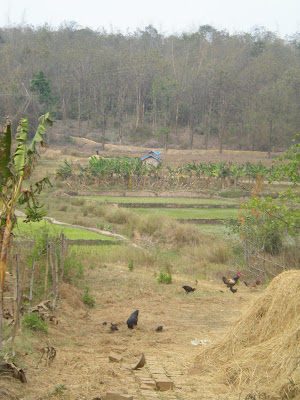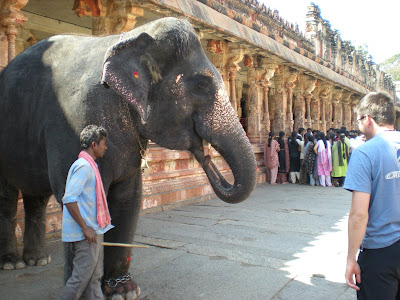
Fort Cochin is the old city It's a very walkable area full of old European buildings. The chaos of urban India is minimized . The whole place is extremely touristy and packed with Westerners; most businesses here cater to foreign tourists.

Across the harbor lies Ernakulam, the true modern heart of the city. Ernakulam is far more Indian than Fort Cochin (which at times seems almost a foreigners' sanctuary).

Beautiful old church in Fort Cochin. A visit inside reveals the diversity of European influences Cochin has received; the church was built by the Portuguese, but the inscriptions on many graves are in Dutch, and of course control of Cochin eventually passed to the British.



The Jain temple, and scenes from the daily pigeon feeding. Jains believe it's sinful to harm any living thing (this is why their religion does not permit them to become farmers) and helping animals is a way to accumulate merit. In Mumbai there's a Jain animal sanctuary that we didn't get to, but our guide book makes it sound almost like a petting zoo, with very well-cared-for animals.
I'm almost ashamed to say that barely a week later, in Cairo, I tried pigeon meat for the first time. The Jains would not have approved. (But they also would have disapproved of the fish I ate in Cochin, and of the mutton I ate in Mumbai.)
Cochin is near the geographical heart of Kathakali dance, and it is extremely easy for tourists to find local performances. A proper Kathakali performance is an all-night affair; most newbies perfer to see abridged performances that tend to run about 90 minutes. I saw one such performance at Northern Virginia Community College in the States a few years ago, and I saw my second in Fort Cochin.

Before the performance, the actors spend an hour applying their intricate makeup in full view of the audience. Then we had a local expert give us a short talk on the ways and customs of kathakali, and had one of the actors demonstrate the subtle facial expressions and sign language used. The actors do not speak out loud - they communicate through sign language while guys off to the side sing their lines.
I didn't take any still pictures of the performance because of the ban on flash photography (which many of my fellow audience members brazenly ignored), but I made a minute-long video:, which I would upload but apparently uploading a 100-megabyte video on blogger takes approximately forever.
Another attraction of the Cochin area is the substantial backwaters. Peaceful yet touristy, motorboats and rowboats ply the lakes and canals.



We signed up for a two-part tour. In the morning, we took a motorboat around a vast lake, at one point stopping to visit a factory where toddy is made from palm coconuts. (Although we had the option of buying some juice, there was no aggressive selling - this was a legit and on-the-level tour.)

We got a decent thali lunch on the motorboat, then switched to hand-rowed boats for the afternoon, when we traveled through rural canals and saw rope-making and coconut harvesting.

On our last evening in Cochin we went to the Shiva temple in Ernakulam to witness some temple festivities.



There were crowds, music, and elephant processionals. If we'd wanted to stay into the evening we could have seen a full performance of kathakali, but neither of us really felt up to it.
The next day we departed on our 26-hour train ride to Mumbai...

































